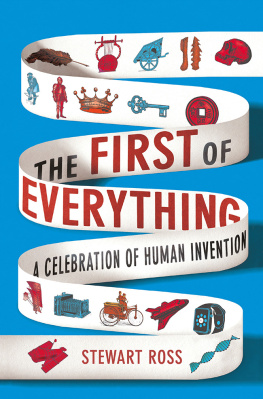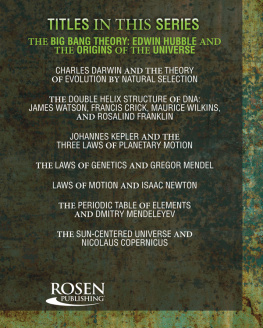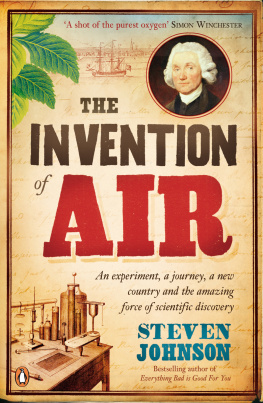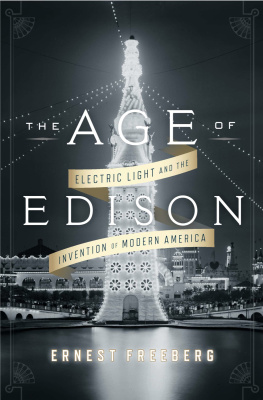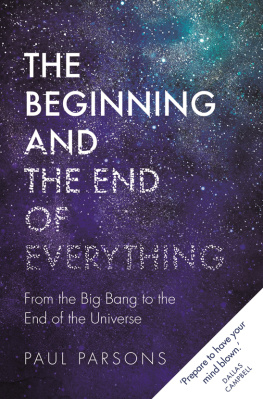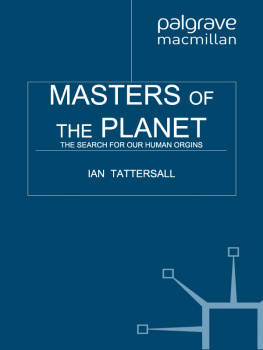THE FIRST OF
EVERYTHING
Solve it Like Sherlock

First published in Great Britain in 2019 by
Michael OMara Books Limited
9 Lion Yard
Tremadoc Road
London SW4 7NQ
Copyright Michael OMara Books Limited 2019
All rights reserved. You may not copy, store, distribute, transmit, reproduce or otherwise make available this publication (or any part of it) in any form, or by any means (electronic, digital, optical, mechanical, photocopying, recording or otherwise), without the prior written permission of the publisher. Any person who does any unauthorized act in relation to this publication may be liable to criminal prosecution and civil claims for damages.
A CIP catalogue record for this book is available from the British Library.
ISBN: 978-1-78929-062-2 in hardback print format
ISBN: 978-1-78929-209-1 in paperback print format
ISBN: 978-1-78929-063-9 in ebook format
Cover design by www.patrickknowlesdesign.com
Cover images Shutterstock
www.mombooks.com
To Lucy, without whose unstinting and generous efforts
as proofreader, fact checker and warm-hearted supporter,
this book could not possibly have been completed.
CONTENTS
To research the first instances of literally everything (even the first book of firsts!) would be an infinite task. Inevitably, therefore, this book is selective. The criteria for inclusion are twofold. One, the very first of a type for example, I have written about the first washing machines, including the first electric ones, but not about the vast subspecies of electrical washing machine, such as fully automatic, twin tub, etc. This should make plain the second criterion: I have included only such firsts as would, in my judgement, interest the general reader who I hope is not a washing machine aficionado.
What makes this book different from other books of firsts? As well as being extremely broad-ranging and comprehensive, it is, as far as I am aware, the only one to put historical achievements in their rightful place. In other words, instead of concentrating on modern and largely Western gadgetry, I have attempted to give due weight to the inventiveness of our distant ancestors in the ancient civilizations of Egypt, China and the Middle East. In doing so, I have been surprised by how many supposed inventions of the industrial world (e.g. air conditioning) are in fact reinventions of or improvements on creations and behaviours of many thousands of years ago. By redressing the global imbalance that arises when we esteem modern technology over traditional ingenuity, we find the USA and the ancient world share the gold medal position on the podium of firsts, with the UK and France one step down.
I suspect few readers will be steadfast enough to read through the entire book, cover to cover, and most will dip into it for entertainment or use it as a work of reference for pub quizzes or to settle family arguments. To make these tasks easier, the contents have been arranged under three types of heading: the seven sections (In the Beginning; At Home; Health and Medicine; Getting About; Science and Engineering; Peace and War; Culture and Sport) are each divided into topics, which in turn are subdivided into subjects.
Finally, accuracy. Sources often differ widely, and precise dates are frequently controversial: is the date for the first of a certain type of machine, for instance, when it was dreamed up, when it was patented, when the prototype was built, or when it went into production? With this in mind, I have done my best to be clear and accurate; even so, in places I am sure I have fallen short. I apologize unreservedly for any confusion and frustration (even anger!) these inadvertent slips may cause.
Stewart Ross
Where relevant or known, the place where something was first used, discovered or invented is identified by the name of the present-day country occupying that region. This was not necessarily the name current at the time, and nor did ancient boundaries coincide with modern ones. Thus, firsts from Persia are generally labelled as Iran, Anatolia as Turkey, Mesopotamia as Iraq, etc.

BIG BANG
The first first, more or less by definition, was the Big Bang of some 13.8 billion years ago that created time, the universe and everything. Everything? Even whatever it was that went bang? Lets not go there ...
LIFE
The first life on Earth a much easier concept is thought to have emerged 4.28 billion years ago, when our young planet was celebrating its 26 millionth birthday. Scientists refer to this first life thing (the simplest of microorganisms) as LUCA the Last Universal Common Ancestor. Apparently, were all descended from LUCA.
HANDY MAN
LUCAs descendants took a very long time to evolve into the genus Homo, which appeared only about 2.1 million years ago. Its identifying features were an ape-like physiognomy, a bulging brain and an ability to use primitive tools (another first) hence its name, Homo habilis or handy man.
UPRIGHT, FIRE, TOOLS AND SPEECH
About 200,000 years later, Homo erectus (upright man) had developed. This creatures even larger brain may have enabled it to speak (if so, we have the first language). The species had possibly learned to handle fire (one more first, see ) and certainly made tools of greater sophistication; it was also spreading out from Africa to populate the globe.
HOMO SAPIENS
Were not quite sure what happened next. However, from among the variety of Homo types, by c. 50,000 BC Homo sapiens (intelligent man) was hunting and gathering in the inclement conditions of the last glacial period. These were the first modern human beings, forebears of the extraordinarily inquisitive and inventive men and women responsible for the astonishing catalogue of firsts that follows.

The skulls of Homo sapiens (left) and of his unsuccessful relative, Homo neanderthalensis

CIVILIZATION
EVOLUTION
Human development is evolutionary and cumulative; or, in the words of Sir Isaac Newton (repeating a well-known idea of classical origin), new ideas and objects came from people standing on the shoulders of giants. We have already met some of those giants, the primitive, anonymous people who made three vital early breakthroughs: fire, tools and speech.
AGRICULTURE
The baton now passes to Homo sapiens for perhaps the most significant of all firsts: agriculture. The change from hunting animals and gathering food to considered husbandry took place independently in some dozen different parts of the world, beginning with the domestication of pigs in Mesopotamia (Iraq) in about 13,000 BC. Within a few thousand years again in the Middle East fields of wheat, barley and other crops were flourishing beside pigsties, all tended by the first farmers.
SETTLEMENTS AND CITIES
Once human beings ceased being nomadic, caves, tents and temporary shelters were abandoned in favour of

